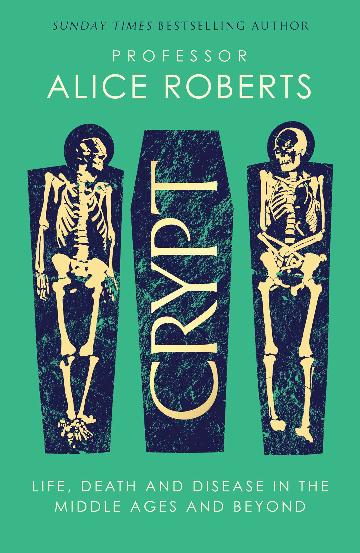Alice Roberts
Crypt
Crypt
Couldn't load pickup availability
Lindsay Hasluck’s Review
Professor Roberts’ handsome new hardback once more takes us into the world of archaeological science. Using new data and advanced technologies, she revises our understanding of the past and expands our limited and outdated knowledge of the human story. Just as she did in her informative book Celts, Roberts begins by re-forming our image of the Viking culture, demonstrating the interrelatedness of the Viking people from all over Europe and indeed the rest of the world. Consulting DNA sampling from graves in Britain and beyond, she offers a new and more open vision of Viking society. Travelling onwards through history, we learn, among many other thingsand in exquisite detail, about the birth of British Christianity, the roles of Monks and Priories and the archers of the Mary Rose.
Her book also explores subjects that transcend time and place, such as leprosy and skeletal disease, presenting interesting details about grave-goods and the analysis of skeletons from various burials sites. Her explanations provide a succinct explanation of osteo-science and the genetic influence on bone diseases. Ultimately, it is the use of science that connects the graves through time, and which shows the variety of life and death in the Middle Ages, as well as the continuity of physical and cultural connections through time. A different and wonderfully unexpected window on the past.
Publisher’s Review
The new book by Sunday Times bestselling author of Ancestors and Buried - the final instalment in Professor Alice Roberts' acclaimed trilogy.
In her previous two bestsellers, Professor Alice Roberts powerfully and evocatively revived people of the past through examining their burial rites, bringing a fresh perspective on how they lived. In Crypt, Professor Roberts brings us face to face with individuals who lived and died between ten and five centuries ago.
The stories in this book are not comforting tales; there’s a focus on pathology, on disease and injury, and the experience of human suffering in the past. We learn of an episode of terrible brutality, when hate speech unleashed a tide of violence against an ethnic minority; of the devastation caused by incurable epidemics sweeping through medieval Europe; of a protracted battle between Church and State for the heart of England – a battle that saw the most famous tomb in the country created and destroyed; and a tumultuous story, forged in the heat of warfare, that takes us out of the Middle Ages into the sixteenth century and the reign of Henry VIII.
In the Middle Ages, there’s barely a written note for most people’s lives. The information we can extract from archaeological human remains represents is an essential tool for understanding our history. Most of these dead will remain anonymous. But, in the thrilling final chapter, Professor Roberts introduces an individual whose life and bones were marked by chronic debilitating disease – and whose name might just be found in history…
Beautifully written, vividly drawn, and expertly researched, this is a brilliant and unexpected portrait of modern Britain.
Share


